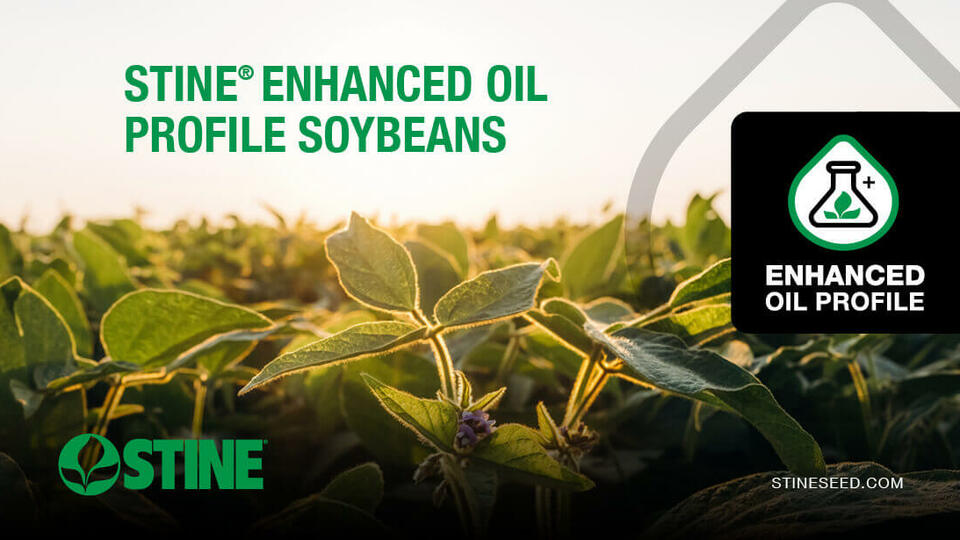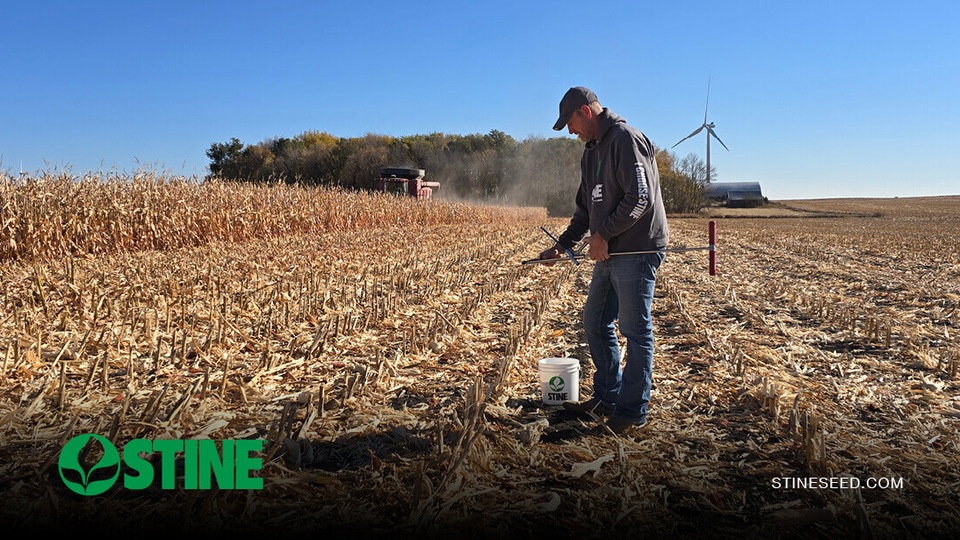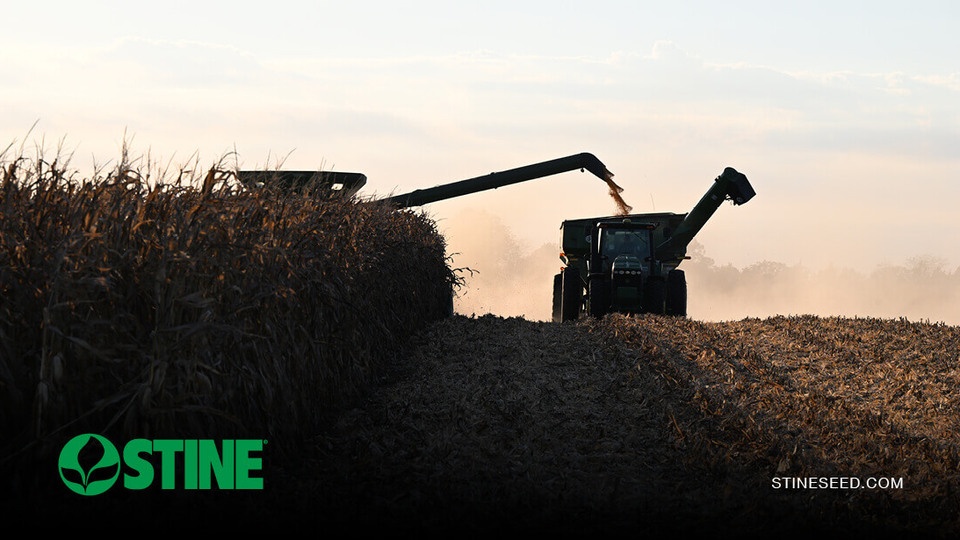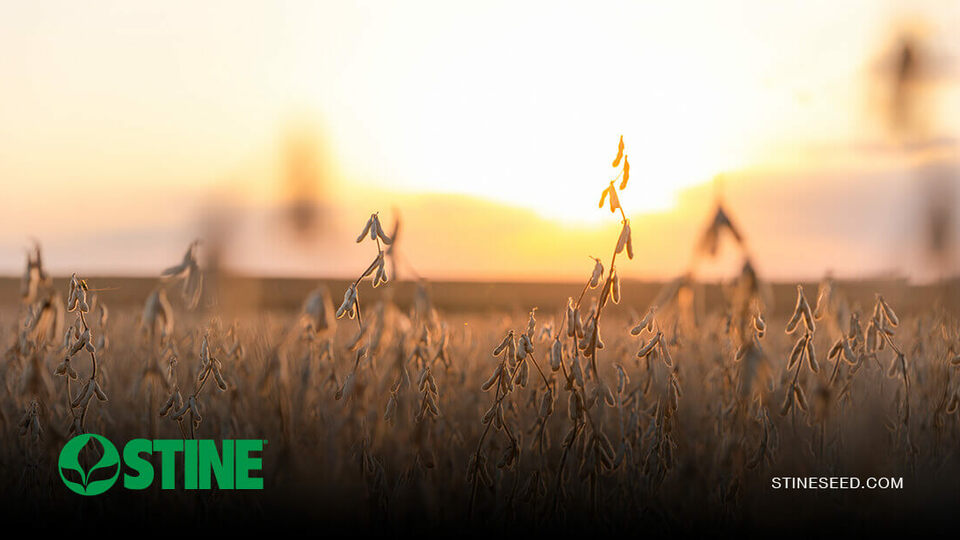Corn production growth paves way for more high-performing Stine® hybrids
November 2025Developing and delivering high-yielding corn genetics to growers’ fields is no simple task. For the leading independent seed company in the U.S., it’s taken time to perfect the process. It involves testing thousands of hybrids across millions of plots in diverse regions nationwide. This extensive approach ensures replicated data that builds confidence in each line’s performance in a variety of growing environments.

At Stine® Seed Company, the continuous growth of our corn breeding program is evidence that the process works. The more testing and evaluation we do each season, the better new material we uncover. We continue to expand our production and testing efforts each year to ensure we’re delivering only the very best to our grower customers.
“What Harry [Stine] always tells people about breeding programs is that it’s a number game, and you have to have volume if you want to find things. That’s the path we’re going down right now — trying to get the number of hybrids we’re evaluating up to increase our chances of finding good things.”
Warren Stine, assistant director of corn research at Stine
The numbers game
This year, Stine increased the size of its corn breeding program by 20%, and we’re on pace to expand it by another 20% in 2026.
“I look at the change of our program through the size of our corn nursery,” says Stine. “And the reason I look at it like that is because that’s everything we’re testing. All those parents have to be in the nursery. The size of your nursery reflects what’s in the testing program.”
He notes that in 2022, Stine’s corn nursery spanned roughly 26 acres. In 2023, the company bumped it up to 38 acres, and in 2024, 39 acres. This year, the nursery encompassed 57 acres, and in 2026, the goal is to add 10 more.
The more acres tested, the more hand pollinations are required for crossing inbred parents to produce new lines. This year, the corn nursery team conducted 800,000 hand pollinations, up from 625,000 last year. Next year, they’re eyeing close to 1 million hand pollinations just at the Adel, Iowa, nursery.
After a hybrid is developed in the nursery and spends time in our Pre-Elite Trials, if it shows strong potential, it advances to our Elite Yield Trials. In 2023, we tested 58,000 hybrids in 650,000 plots across 43 locations in the U.S. In 2024, we nearly doubled the size of our program, testing 84,000 hybrids in 800,000 plots in 43 locations. This year, we tested more than 111,000 hybrids in 1 million plots across 43 locations.
“The majority of the growth in the corn production program comes from the company’s Pre-Elite Trial program, which is Stine’s entry-level tier of its testing program. That’s where we’re seeing the largest volume of increase — all hybrids we’ve never evaluated before, so it’s our first time testing them. We’re seeing promising results from our new hybrids.”
Warren Stine, assistant director of corn research at Stine
Performance even in unusual circumstances
This year, southern storms brought in southern rust, which was a big player across much of the Midwest — an area that doesn’t typically experience the disease in excess.
“I don’t think that here in Adel, we’ve seen southern rust this bad for maybe 20 years,” says Stine. “Through this maturity zone, you don’t typically have a lot of genetics tolerant to southern rust. That was not the case this year. … On the research side, I like the rust because when you get into your preliminary yield trials, you see everything that can’t handle it, and you throw that stuff out. And the survivors, the things that float to the top that have resistance and good tolerance, those genetics move forward. And then we know that next year we’ll have some really good products that handle the disease.”
Hybrids that displayed southern rust resistance in the program this year also showed strong performance given the unusual growing environment, which included a lot of moisture at the beginning of the growing season and storms that brought southern prevalent winds, and with it, southern rust.
“Material that was rust resistant had an exceptional year; it yielded well, and I was pleasantly surprised to see that all the way throughout our testing program,” he says. “We appeared to have good material like that in the late-, mid- and early-maturity tests.”
Achieving an early goal
In addition to testing for disease resistance, one of our goals this year was to ramp up development of our early germplasm to get earlier products in our lineup for the growers who need it most, an effort Stine notes was a success.
“It looks like we’ve accomplished this,” says Stine. “We have some good and exciting products. I’m really tickled about MX481 and our MX471. We think we even have some stuff that’s earlier than that that’s really, really good. We’ve successfully built out that early program; it’s very rewarding to set a goal and to get there.”
MX481 and MX471 feature a brand-new early male that Stine notes took him by surprise.
“If you look at it in the nursery, it doesn’t look like it’s anything special, but this male seems to work in many combinations,” he says. “It works with a lot of different females in our program. The yields from it are consistently significantly higher than other material in our program. Even the checks that we bring in from our competitors, it’s just nailing them.”
He adds that multiyear data supports that these hybrid combinations perform exceptionally well, continuously yielding 108%–110% of yield trial average.
“They are absolutely the top of the top,” he says. “My guess is we’re going to sell out.”
What’s next for the breeding program now that they’ve made progress on the earlier-maturity material? Stine notes that the next step is building a stronger, bigger fuller-season program. He also adds that short-stature corn is still a focal point in the program, but only if it yields.
“It looks like we have a good mix coming forward of both very short hybrids and more industry-standard hybrids for height. It’s a bit surprising. We’ve really stressed shorter material for so long, but we keep bringing out taller material, too. It just goes to show that if you focus on yield, whether it’s short or tall hybrids, it really doesn’t matter at the end of the day.”
Warren Stine, assistant director of corn research at Stine
The Stine advantage
The goal of Stine’s corn breeding program has always been to deliver high-yielding products to growers’ fields, but what sets it apart is how the company achieves that goal. The scale of our program, along with where and how we test hybrids, allows us to gather extensive data on each line and make more confident placement decisions. Ultimately, our focus is on developing hybrids that perform across a wide range of environments, ensuring growers have products that will thrive no matter what next year’s weather brings.
“We’ve got a very unique program; it’s very different from everybody else in the industry,” says Stine. “We’re not just delivering old corn hybrids. We’ve got unique genetics that we’re bringing to customers because we have different testing. We’re different in how we think about corn.”
Stine adds that this approach to corn breeding was inspired by his father, Harry Stine.
“People think of him as a breeder and a businessman. I would tell you his No. 1 hat is a farmer hat. He thinks of himself as a farmer, and that’s how he’s looking at the world and the material coming through the breeding program. … I don’t think anyone else in any of those other seed companies that has a breeding program really looks at the world as he does from a farmer’s perspective.”
Warren Stine, assistant director of corn research at Stine
To learn more about Stine’s innovative corn breeding program and what products are on the horizon in your region, contact your local Stine sales rep.
Related Articles
-

Understanding Stine’s enhanced oil profile soybeans
December 2025 in Agronomy
-

Soil sampling sets the stage for spring
November 2025 in Agronomy
-

Stine harvest roundup: Part 2
October 2025 in Agronomy
-

Stine harvest roundup: Part 1
October 2025 in Agronomy



